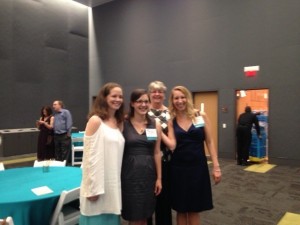
Something Borrowed: Our fellowship has been all about borrowing. The camaraderie and “fellowship” of this fellowship encourages the sharing resources, trying them in our own classroom/style, reflecting on the experiencing and making them even better for our whole group! Christina, Alex, and I have gone beyond the project goals to help one another in our classroom goals and instruction.
Something Blue: The sad part about the timing of this post is that it means the 3 of us are all extremely busy in our own districts. While we are excited for this school year and what is already happening, it is becoming more and more complicated to find time when to sit as a group and work on our project. We are now at a point where a bulk of what we do is independent work, then come back together to collaborate and reassess our plans.
Something Learned: One of my most valuable takeaways is that when frustrating things happen in education, the blame should not go straight to DPI. I can’t tell you the amount of times I hear/have said myself, “if only DPI knew what they were doing” or “it’s just DPI making us jump through another hoop.” While I still think it is good to question anything coming at us in the classroom, I walk into this year giving DPI more slack and am able to defend decisions to colleagues. The staff members in the math department at DPI are frustrated by the educational climate and mandates being required of them. Though it may not always feel like it, they are doing their best to try to navigate a tricky system and do what is right for students and teachers.
Something NEW: A new perspective on DPI, which will hopefully help others understand the math decisions/work/expectations coming out of the department.



